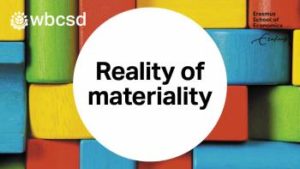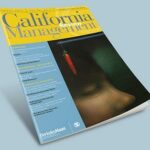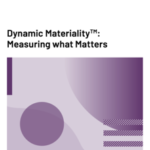
In a report that is released today, a team from Erasmus School of Economics, the World Business Council (WBCSD), and Impact Centre Erasmus show why determining materiality is a challenge and the main steps in materiality assessments.
Although regulators, shareholders, and other stakeholders are asking for robust information on environmental, social, and governance (ESG) topics, there is a lack of consensus in practice on when ESG topics should be considered material for companies. Consequently, practices on determining the materiality of ESG topics vary greatly and are often not explicitly communicated, decreasing the transparency of corporate decision-making.
As Dr Jilde Garst, post-doctoral researcher at Erasmus School of Economics explains: ‘In conducting their materiality assessment, companies make multiple decisions that indirectly determine the end-result: which ESG topics are identified as material for their business. For example, we observed two different perspectives on materiality are being used in practice. These decisions are not always taken deliberately, but companies follow what they think is common practice or the practice of the consultant they hired. To support companies in making these decisions and communicating them, our report outlines the main steps of the materiality assessments and the main challenges faced by companies in these steps.’
By making the steps and challenges in materiality assessments more explicit, the authors aim to support increased transparency in sustainability reports. However, the materiality assessment is not just a reporting tool. As Professor Karen Maas (Impact Center Erasmus) indicates: ‘Materiality assessment is an important strategic tool for companies to get better insights in the most relevant topics to reduce their negative impacts and to enlarge their positive impacts.’ Therefore, the report concludes that by not just regarding the materiality assessment as a tick-the-box exercise but by using it to its full potential, companies can gain many valuable insights for their sustainability strategy.
In the end, the ‘walking’ and ‘talking’ of the company should be seen as reinforcing elements on the road to corporate sustainability. ‘The disclosure of material, decision-useful ESG information by corporates, and the effective use of this information by the financial markets will be a key enabler of the transitions towards a world where over nine billion people are living well within planetary boundaries’, shared Rodney Irwin (COO of WBCSD).
In addition to this report, a scientific paper is being prepared, discussing in more detail how the decisions in materiality assessments reflect corporate responses to tensions inherent to sustainability.



